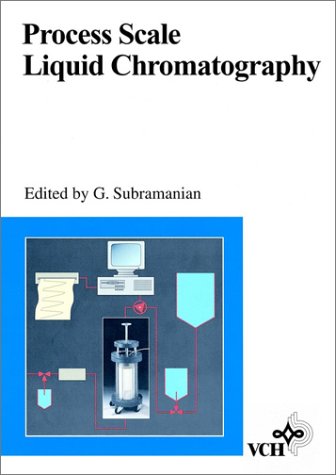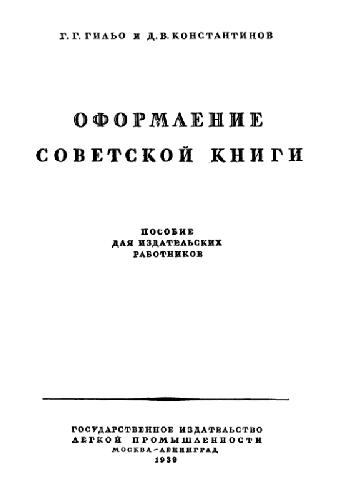Takao Tsuda352728687X, 9783527286874, 9783527615247, 3527286721
Table of contents :
Electric Field Applications in Chromatography, Industrial and Chemical Processes……Page 2
Table of Contents……Page 12
1 Introduction and Summary……Page 20
Part 1 Electrochromatography……Page 30
2.1 Theory of Band Broadening……Page 32
2.3 Processes in Band Broadening……Page 33
2.4 Electrochromatography Zones……Page 36
2.5.1 Flow Profiles of Pressurized Flow……Page 37
2.5.2 Flow Profiles of Electroosmosis in an Open Tube……Page 38
2.5.3 Flow Profiles for Charged Molecules……Page 46
2.6.1 Instrumentation……Page 48
2.6.2 Features and Operational Factors……Page 50
2.6.3 Chromatographic Behavior in Pressurized Flow-Driven Electrochromatography……Page 51
2.6.5 Relation between Elution Time Ratio and pH……Page 54
2.6.6 Variation of Electrophoretic and Electroosmotic Flow Velocities with pH……Page 56
2.6.7 Dependence of Electrophoretic and Electroosmotic Velocities on the Composition of Eluents Containing Methanol……Page 58
2.6.8 Ion-Exchange Chromatography in an Electric Field……Page 59
2.6.9 Voltage-Programmed Electrochromatography……Page 61
2.7 References……Page 64
3.1.1 Surface Charge of Silica Gel and Packing Support……Page 66
3.1.2 Electrical Potential in the Vicinity of a Solid Surface……Page 67
3.1.3 Origin of Electroosmotic Flow……Page 69
3.1.4 Thickness of the Double-Layer……Page 70
3.1.5 Charge Density on Silica Gel Surfaces……Page 72
3.1.6 Chemical Modification of the Inner Surface by Adsorption in Open-Tubular Capillary Columns……Page 73
3.1.7 Effect of pH on Electroosmosis……Page 74
3.1.9 Electroosmotic Flow Velocity in Packed Columns……Page 75
3.2.1 Electroosmotically Driven Electrochromatography……Page 78
3.2.2.1 Open-Tubular Capillary Columns……Page 80
3.2.2.2 Packed Microcapillary (Drawn Packed Capillary) Columns……Page 85
3.2.2.3 Slurry-Packed Capillary Columns……Page 89
3.2.3 Advantages of Electroosmotic Flow for Liquid Chromatography……Page 91
3.3 References……Page 92
4.1 Introduction……Page 94
4.2.1 Design of the Electrode Column……Page 95
4.2.2 Preparation of Stationary Phases……Page 96
4.3 Redox Separation of Electroactive Metals on the Conductive Stationary Phase……Page 98
4.4.2 Stationary Phase Coated with Crown Ether for the Separation of Alkali Metal Ions……Page 99
4.4.3 Electrosorption for the Separation of Neutral Organic Compounds……Page 101
4.5.1 Conducting Polymers for Separation of Anions……Page 102
4.7 References……Page 107
5.2 Significance……Page 110
5.3 Characteristics of Biomolecules……Page 111
5.4 Development of Electrochromatographic Techniques……Page 113
5.5 Gel Electrophoresis……Page 115
5.6.1 Sequential Electrochromatography……Page 116
5.6.2 Electrochromatography with Modern Adaptions to Liquid Chromatography……Page 118
5.6.3 Focusing in Columns……Page 123
5.7 Electrochromatography in Microcolumns……Page 127
5.7.1 Electro-Osmotically-Driven Electrochromatography……Page 128
5.7.4 Capillary Gel Electrophoresis……Page 130
5.8 Conclusions and Future Directions……Page 131
5.9 References……Page 132
6.1.1 Multiple Injection for Accumulating a Charged Component in the Column……Page 136
6.1.2 Continuous Sample Introduction for In-Column Sample Focusing……Page 137
6.2.1 Instrumentation……Page 139
6.2.2 Preparative-Scale Electrochromatography with a Counter-Current Chromatographic Column……Page 141
6.3.1 Instrumentation……Page 142
6.3.2 Combination of Pressurized Flow-Driven Electrochromatography and Mass Spectrometry……Page 143
6.4 Two-Dimensional Preparative Chromatography with Continuous Injection……Page 145
6.4.1 Continuous Preparative Electrochromatography: a Large Cylindrical Column with Rotation……Page 146
6.4.2 Separation of a Test Mixture……Page 147
6.5 References……Page 148
Part 2 Applications of Electric Fields in Industrial Processes……Page 150
7.1 Introduction……Page 152
7.2 Electroosmotic Flow through a Capillary……Page 153
7.3 Electroosmosis in Porous Media……Page 155
7.4.2 Theory……Page 156
7.4.3 Physical Properties of the Material……Page 160
7.4.4 Comparison of Theory and Experiment……Page 161
7.5 Industrial Applications……Page 166
7.6 Conclusions……Page 168
7.7 Nomenclature……Page 169
7.8 References……Page 170
8 Electrophoretic Forming of Ceramics……Page 172
8.1 Electrophoretic Behavior of Inorganic Particles in Aqueous Solution……Page 173
8.2 Selection of Organic Solvents for Electrodeposition of Inorganic Particles Dispersed in Organic Solution……Page 174
8.3.1 History……Page 175
8.3.2 Industrial Applications of Electrophoretic and Electroosmotic Forming……Page 177
8.4 Control of Particle Diameter for High Productivity and a Low Water Content in Electrical Forming……Page 180
8.6 Electrodes……Page 183
8.7 Electrophoretic Forming Continuous Ceramic Sheet……Page 185
8.8 References……Page 188
9.2 Fundamental Characteristics of ERF……Page 190
9.3.1 Chelate Resin……Page 194
9.3.2 Porous Silica Microspheres……Page 197
9.3.3 Carbonaceous Particulate Phases……Page 198
9.4 Applications……Page 200
9.6 References……Page 203
10.1 Introduction……Page 204
10.2 Theory……Page 205
10.2.1 Hybrid Flow and Enhanced Mass Transfer Around Drops……Page 206
10.2.2 Electrostatic Liquid Dispersion……Page 211
10.2.3 Electrostatic Drop – Drop Coalescence……Page 213
10.3.1 Electrostatic Spray Column……Page 214
10.3.2 Electrically Assisted Mixer – Settler Extractor……Page 215
10.3.3 Electrostatic Pseudo-Liquid Membrane Extractor……Page 219
10.4 Nomenclature……Page 220
10.5 References……Page 222
11.1 Introduction……Page 224
11.2.1 Dielectrophoresis……Page 225
11.2.2 Computational Simulation of Chain Formation……Page 227
11.2.3 Observation of Chain Formation……Page 228
11.2.4 Electrophoresis……Page 230
11.2.5 Effect of Electric Fields on Resolution of Water-in-Oil Dispersions……Page 231
11.3.1 Dehydration……Page 232
11.4.1 Membrane Recovery in Liquid Membrane Separation……Page 238
11.6 Nomenclature……Page 245
11.7 References……Page 246
Part 3 Applications of Electric Fields for Concentration, Immunoassay and Molecular Orientation……Page 248
12.1 Collection of Metal Ions from Acid Solutions by Hydrodynamic Recycling……Page 250
12.2 Electrodialysis for Desalting or Concentration of Metal Ions by Multiple Ion-Exchange Chambers……Page 252
12.3.1 Principles……Page 255
12.3.2 Apparatus……Page 258
12.3.3 Examples……Page 259
12.4 Electroosmosis and Electrophoretic Mobility for Counter-Current Electroconcentration……Page 260
12.5 Electroosmosis for Sample Transfer……Page 261
12.6 Electrodeposition of Metal Ions and their Selective Release……Page 263
12.7.1 Operational Procedure……Page 264
12.8 Use of Electrochemical Reactions for Decomposition of Metal Complexes……Page 266
12.10 References……Page 267
13.2 Pulsed Immunoassay for Pathogenic Cells……Page 268
13.2.1 Experimental Procedures……Page 269
13.2.3 Agglutination by Immunoreaction in an Electric Field……Page 270
13.3 Alternating Current Field Enhancing Latex Immunoassay for Human Myoglobin……Page 273
13.3.1 Experimental Procedures……Page 274
13.3.2 Agglutination Induced by a.c. fields……Page 275
13.3.3 Time Course of Immunoreactions……Page 277
13.4.2 Design of Micromachined Reactors……Page 279
13.4.3 Application to Immunoassay for AFP……Page 280
13.6 References……Page 282
14.1 Introduction……Page 284
14.2.1 Applied Electrostatic Fields……Page 285
14.2.3 Micelles……Page 289
14.2.4 Energy and Electron Transfer……Page 290
14.2.5 Miscellaneous Reactions……Page 296
14.2.6 Reversed Micelles……Page 299
14.2.7 Vesicles……Page 301
14.2.8 Mono- and Multilayer Membranes……Page 302
14.2.9 Polyelectrolytes……Page 305
14.2.10 Inorganic Solid Surfaces……Page 306
14.3 References……Page 314
Index……Page 320







Reviews
There are no reviews yet.